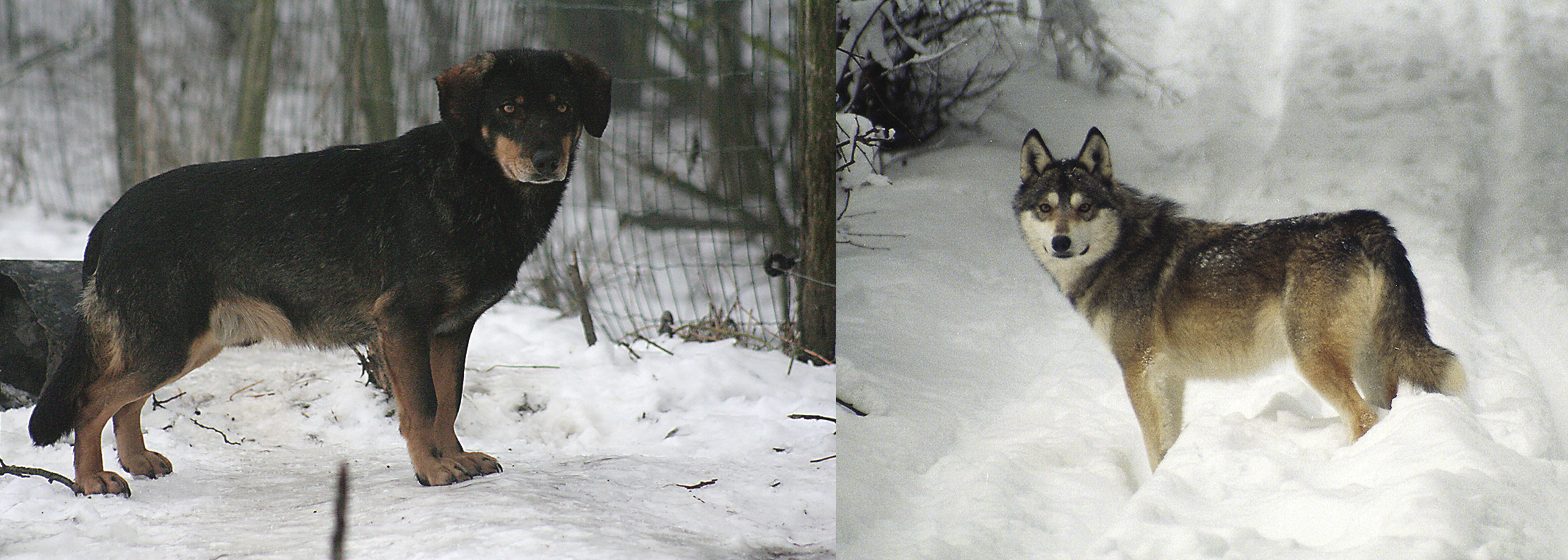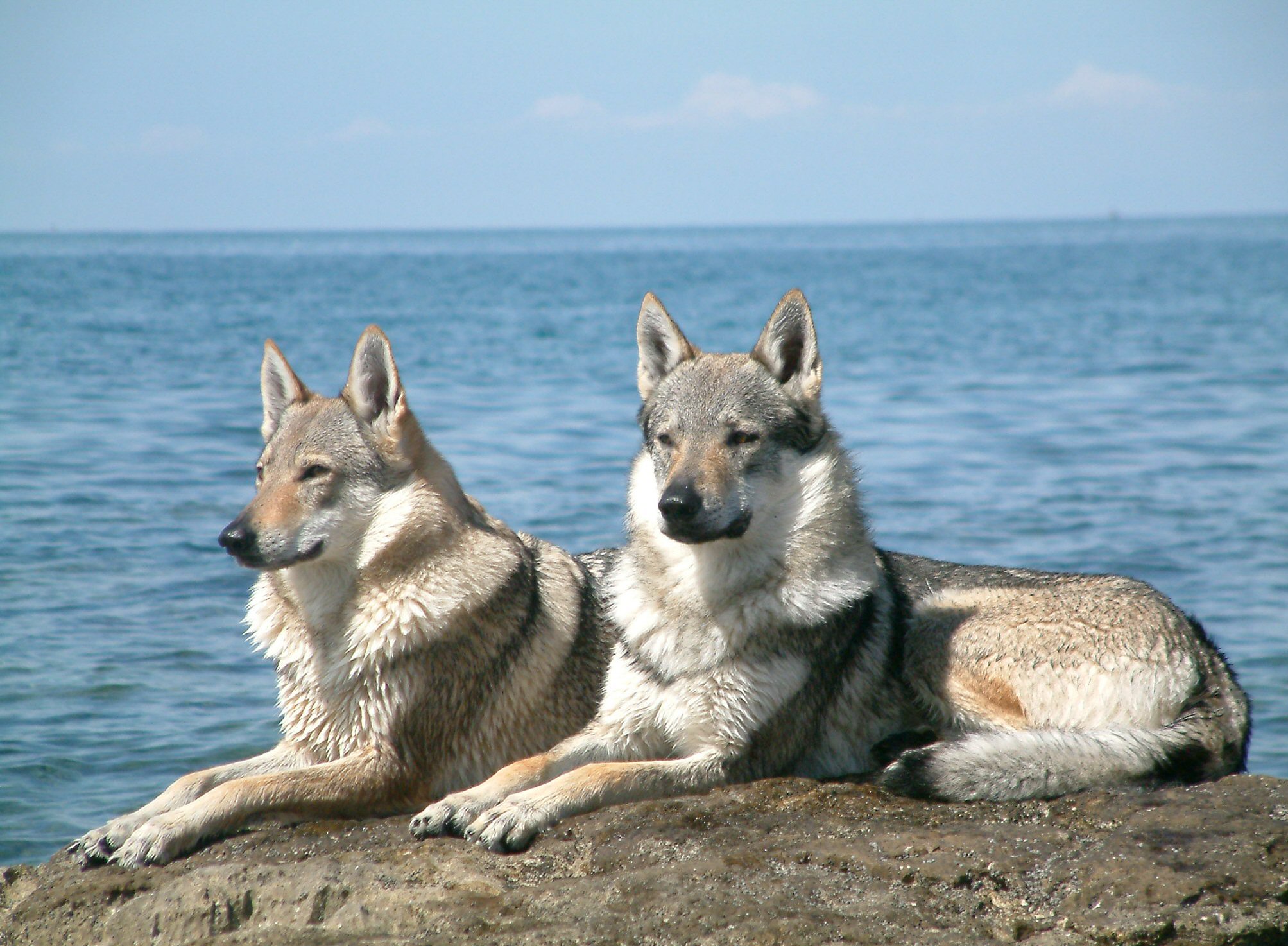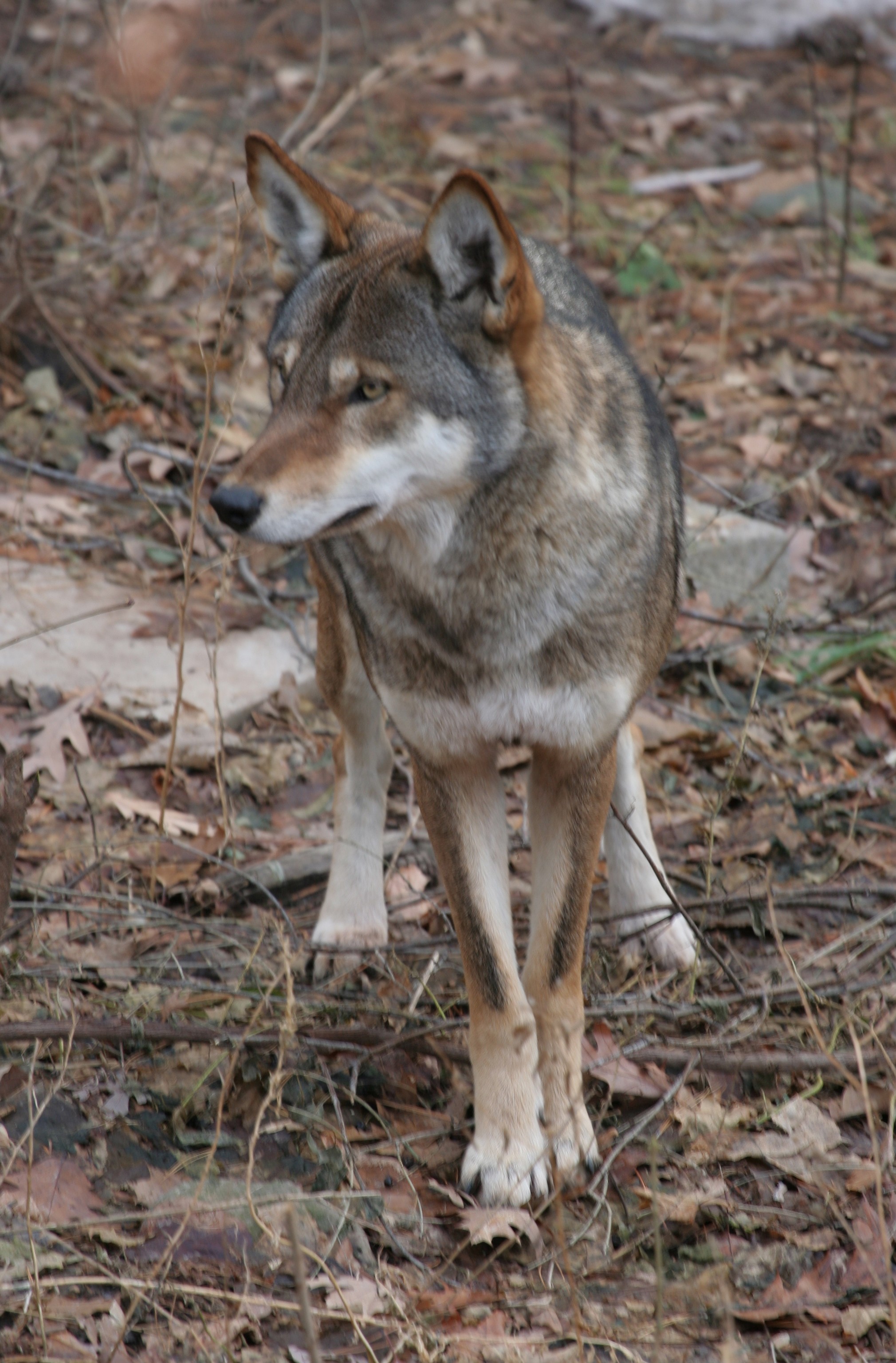|
Wolfdog
A wolfdog is a canine produced by the mating of a domestic dog (''Canis familiaris'') with a gray wolf (''Canis lupus''), eastern wolf (''Canis lycaon''), red wolf (''Canis rufus''), or Ethiopian wolf (''Canis simensis'') to produce a hybrid. Admixture There are a range of experts who believe that they can tell the difference between a wolf, a dog, and a wolfdog, but they have been proven to be incorrect when providing their evidence before courts of law. Admixture between domestic dogs and other subspecies of gray wolves are the most common wolfdogs since dogs and gray wolves are considered the same species, are genetically very close and have shared vast portions of their ranges for millennia. Such admixture in the wild have been detected in many populations scattered throughout Europe and North America, usually occurring in areas where wolf populations have declined from human impacts and persecutions. At the same time, wolfdogs are also often bred in captivity for ... [...More Info...] [...Related Items...] OR: [Wikipedia] [Google] [Baidu] |
Czechoslovakian Wolfdog
The Czechoslovakian Wolfdog ( cz, Československý vlčák, sk, Československý vlčiak, german: Tschechoslowakischer Wolfhund) is a wolf-dog breed that began as an experiment conducted in Czechoslovakia in 1955. After initially breeding working line German Shepherds with Carpathian grey wolves, a plan was worked out to create a breed that would have the temperament, pack mentality, and trainability of the German Shepherd and the strength, physical build and stamina of the Carpathian wolf. The breed were originally used as Border patrol dogs but were later also used in search and rescue, Schutzhund sport, tracking, herding, agility, obedience, hunting, and drafting in Europe and the United States. It was officially recognized as a national breed in Czechoslovakia in 1982, and was officially recognised as a breed by Fédération Cynologique Internationale (FCI) in 1989. History In 1955, Karel Hartl began to consider crossing a Carpathian grey wolf with a German Shep ... [...More Info...] [...Related Items...] OR: [Wikipedia] [Google] [Baidu] |
Sarloos Wolfdog
The Saarloos Wolfdog ( nl, Saarlooswolfhond, german: Saarlooswolfhund) is a wolf-dog breed originating from the Netherlands by the crossing of a German Shepherd with a Siberian grey wolf in 1935. The offspring were then further crossed with German Shepherds. History Leendert Saarloos (1884–1969) was a Dutch zoologist and dog breeder who believed that the German Shepherd had become too domesticated and wanted to breed back the more natural properties in order to derive a better working dog. In 1935, he bred a male German Shepherd (german: Deutscher Schäferhund, nl, Duitse herdershond) to a female Eurasian grey wolf (''Canis lupus lupus'') from Siberia. He then bred the offspring back with German Shepherds to derive a dog with one quarter wolf blood. The result was a dog that was not useful as a working dog but as companion that is close to nature. The Dutch Kennel Club recognized the breed in 1975. To honour its creator, they named this dog the "Saarloos wolfdog". In 1 ... [...More Info...] [...Related Items...] OR: [Wikipedia] [Google] [Baidu] |
Saarloos Wolfdog
The Saarloos Wolfdog ( nl, Saarlooswolfhond, german: Saarlooswolfhund) is a wolf-dog breed originating from the Netherlands by the crossing of a German Shepherd with a Siberian grey wolf in 1935. The offspring were then further crossed with German Shepherds. History Leendert Saarloos (1884–1969) was a Dutch zoologist and dog breeder who believed that the German Shepherd had become too domesticated and wanted to breed back the more natural properties in order to derive a better working dog. In 1935, he bred a male German Shepherd (german: Deutscher Schäferhund, nl, Duitse herdershond) to a female Eurasian grey wolf (''Canis lupus lupus'') from Siberia. He then bred the offspring back with German Shepherds to derive a dog with one quarter wolf blood. The result was a dog that was not useful as a working dog but as companion that is close to nature. The Dutch Kennel Club recognized the breed in 1975. To honour its creator, they named this dog the "Saarloos wolfdog". In 19 ... [...More Info...] [...Related Items...] OR: [Wikipedia] [Google] [Baidu] |
Arctic Wolf
The Arctic wolf (''Canis lupus arctos''), also known as the white wolf or polar wolf, is a subspecies of grey wolf native to the High Arctic tundra of Canada's Queen Elizabeth Islands, from Melville Island to Ellesmere Island.https://ecoregions.appspot.com/ Unlike some populations that move between tundra and forest regions, Arctic wolves spend their entire lives north of the northern treeline. Their distribution to south is limited to the northern fringes of the Middle Arctic tundra on the southern half of Prince of Wales and Somerset Islands. It is a medium-sized subspecies, distinguished from the northwestern wolf by its smaller size, its whiter colouration, its narrower braincase,Goldman, E. A. (1964). Classification of wolves. In ''The Wolves of North America'' Part 2. Young, S. P. & Goldman, E. A. (Eds.) New York: Dover Publs. p. 430. and larger carnassials. Since 1930, there has been a progressive reduction in size in Arctic wolf skulls, which is likely the result o ... [...More Info...] [...Related Items...] OR: [Wikipedia] [Google] [Baidu] |
Coywolf
Coywolf is an informal term for a canid hybrid descended from coyotes, eastern wolves, gray wolves and dogs. All members of the genus ''Canis'' are closely genetically related with 78 chromosomes and therefore can interbreed. One genetic study indicates that these two species genetically diverged relatively recently (around 55,000–117,000 years ago). Genomic studies indicate that nearly all North American gray wolf populations possess some degree of admixture with coyotes following a geographic cline, with the lowest levels occurring in Alaska, and the highest in Ontario and Quebec, as well as Atlantic Canada. Description Hybrids of any combination tend to be larger than coyotes but smaller than wolves; they show behaviors intermediate between coyotes and the other parent's species. In one captive hybrid experiment, six F1 hybrid pups from a male northwestern gray wolf and a female coyote were measured shortly after birth with an average on their weights, total lengths, head ... [...More Info...] [...Related Items...] OR: [Wikipedia] [Google] [Baidu] |
Coydog
A coydog is a canid hybrid resulting from a mating between a male coyote and a female dog. Hybrids of both sexes are fertile and can be successfully bred through four generations. Similarly, a dogote is a hybrid with a dog father and a coyote mother. Such matings occurred long before the European colonization of the Americas, as melanistic coyotes have been shown to have inherited their black pelts from dogs likely brought to North America through the Bering Land Bridge 12,000 to 14,000 years ago by the ancestors of the indigenous peoples of the Americas. Coydogs were deliberately bred in Pre-Columbian Mexico, where coyotes were held in high regard. In the city of Teotihuacan, it was common practice to crossbreed coyotes and Mexican wolves with dogs in order to breed resistant, loyal but temperamental, good guardians.Valadez, R., Rodríguez, B., Manzanilla, L. & Tejeda, S. (2006)Dog-wolf hybrid biotype reconstruction from the archaeological city of Teotihuacan in prehispanic cen ... [...More Info...] [...Related Items...] OR: [Wikipedia] [Google] [Baidu] |
Coyote
The coyote (''Canis latrans'') is a species of canine native to North America. It is smaller than its close relative, the wolf, and slightly smaller than the closely related eastern wolf and red wolf. It fills much of the same ecological niche as the golden jackal does in Eurasia. The coyote is larger and more predatory and was once referred to as the American jackal by a behavioral ecologist. Other historical names for the species include the prairie wolf and the brush wolf. The coyote is listed as least concern by the International Union for Conservation of Nature, due to its wide distribution and abundance throughout North America. The species is versatile, able to adapt to and expand into environments modified by humans. It is enlarging its range by moving into urban areas in the eastern U.S. and Canada. The coyote was sighted in eastern Panama (across the Panama Canal from their home range) for the first time in 2013. The coyote has 19 recognized subspecies. The average ... [...More Info...] [...Related Items...] OR: [Wikipedia] [Google] [Baidu] |
Wolf
The wolf (''Canis lupus''; : wolves), also known as the gray wolf or grey wolf, is a large canine native to Eurasia and North America. More than thirty subspecies of ''Canis lupus'' have been recognized, and gray wolves, as popularly understood, comprise wild subspecies. The wolf is the largest extant member of the family Canidae. It is also distinguished from other '' Canis'' species by its less pointed ears and muzzle, as well as a shorter torso and a longer tail. The wolf is nonetheless related closely enough to smaller ''Canis'' species, such as the coyote and the golden jackal, to produce fertile hybrids with them. The banded fur of a wolf is usually mottled white, brown, gray, and black, although subspecies in the arctic region may be nearly all white. Of all members of the genus ''Canis'', the wolf is most specialized for cooperative game hunting as demonstrated by its physical adaptations to tackling large prey, its more social nature, and its highly adv ... [...More Info...] [...Related Items...] OR: [Wikipedia] [Google] [Baidu] |
Red Wolf
The red wolf (''Canis rufus'') is a canine native to the southeastern United States. Its size is intermediate between the coyote (''Canis latrans'') and gray wolf (''Canis lupus''). The red wolf's taxonomic classification as being a separate species, a subspecies of the gray wolf ''Canis lupus rufus'', or a coywolf (a genetic admixture of wolf and coyote) has been contentious for nearly a century. Because of this, it is sometimes excluded from endangered species lists, despite its critically low numbers. Under the Endangered Species Act of 1973, the U.S. Fish and Wildlife Service currently recognizes the red wolf as an endangered species and grants protected status. Since 1996, the IUCN has listed the red wolf as a Critically Endangered species; however, it is not listed in the CITES Appendices of endangered species. History Red wolves were originally distributed throughout the southeastern and south-central United States from the Atlantic Ocean to central Texas, southeas ... [...More Info...] [...Related Items...] OR: [Wikipedia] [Google] [Baidu] |
Gene Flow
In population genetics, gene flow (also known as gene migration or geneflow and allele flow) is the transfer of genetic material from one population to another. If the rate of gene flow is high enough, then two populations will have equivalent allele frequencies and therefore can be considered a single effective population. It has been shown that it takes only "one migrant per generation" to prevent populations from diverging due to drift. Populations can diverge due to selection even when they are exchanging alleles, if the selection pressure is strong enough. Gene flow is an important mechanism for transferring genetic diversity among populations. Migrants change the distribution of genetic diversity among populations, by modifying allele frequencies (the proportion of members carrying a particular variant of a gene). High rates of gene flow can reduce the genetic differentiation between the two groups, increasing homogeneity. For this reason, gene flow has been thought to c ... [...More Info...] [...Related Items...] OR: [Wikipedia] [Google] [Baidu] |
Apennines
The Apennines or Apennine Mountains (; grc-gre, links=no, Ἀπέννινα ὄρη or Ἀπέννινον ὄρος; la, Appenninus or – a singular with plural meaning;''Apenninus'' (Greek or ) has the form of an adjective, which would be segmented ''Apenn-inus'', often used with nouns such as ("mountain") or Greek (), but ''Apenninus'' is just as often used alone as a noun. The ancient Greeks and Romans typically but not always used "mountain" in the singular to mean one or a range; thus, "the Apennine mountain" refers to the entire chain and is translated "the Apennine mountains". The ending can vary also by gender depending on the noun modified. The Italian singular refers to one of the constituent chains rather than to a single mountain, and the Italian plural refers to multiple chains rather than to multiple mountains. it, Appennini ) are a mountain range consisting of parallel smaller chains extending along the length of peninsular Italy. In the northwest th ... [...More Info...] [...Related Items...] OR: [Wikipedia] [Google] [Baidu] |
Italy
Italy ( it, Italia ), officially the Italian Republic, ) or the Republic of Italy, is a country in Southern Europe. It is located in the middle of the Mediterranean Sea, and its territory largely coincides with the homonymous geographical region. Italy is also considered part of Western Europe, and shares land borders with France, Switzerland, Austria, Slovenia and the enclaved microstates of Vatican City and San Marino. It has a territorial exclave in Switzerland, Campione. Italy covers an area of , with a population of over 60 million. It is the third-most populous member state of the European Union, the sixth-most populous country in Europe, and the tenth-largest country in the continent by land area. Italy's capital and largest city is Rome. Italy was the native place of many civilizations such as the Italic peoples and the Etruscans, while due to its central geographic location in Southern Europe and the Mediterranean, the country has also historicall ... [...More Info...] [...Related Items...] OR: [Wikipedia] [Google] [Baidu] |


_Islands%2C_northern_Canada.png)

_Coydogs.jpg)

.png)


